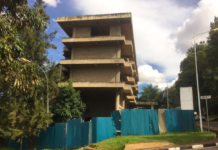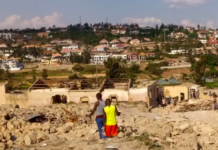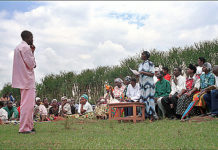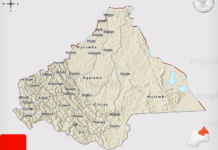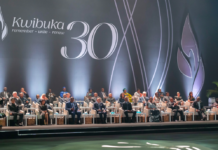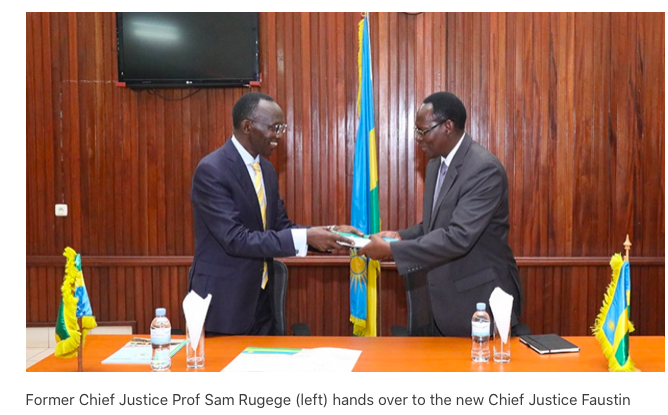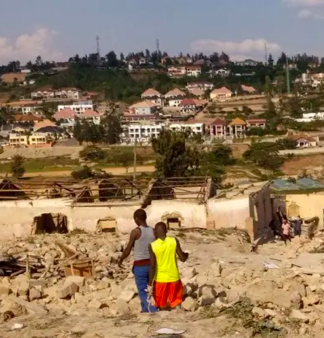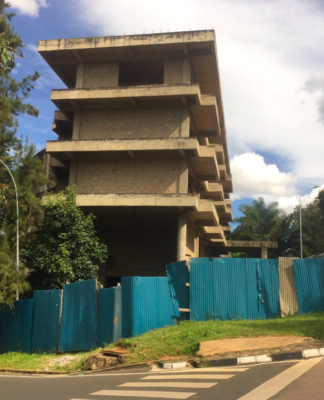INTRODUCTION
Equality of arms is a sacred principle enshrined by the international covenant on civil and political rights especially in its article 14 and a jurisprudential principle of the European Court of Human Rights as well. This principle is a part of the right to fair trial, regulated by art. 6 of the European Convention for human rights and fundamental freedoms . With this article we will debate differences between the ways this principle finds its application and the ways the principle of contradictory does. It is very interesting to see the resembling and the difference between these two principles, the way they interact within a fair trial. Also, we will analyze and highlight the safeguards in the Rwandan legislation which contain connotations of the principle of equality of arms and assess its real observation by Rwandan judiciary through rendered judgments and why not legal loopholes in terms of its domestication. Finally, we suggest ways forward to overcome the infringement of this principle in a bid to legal and judicially protect rights of litigants.
I.ASSESSMENT OF THE COMPLIANCE OF RWANDAN LAW AND JUDICIARY WITH THE PRINCIPLE OF EQUALITY OF ARMS
The present part point out various violations of the principle of equality of arms either by the law relating to criminal procedure per se or the judiciary through its daily rulings.
1.1. Practical violation of fundamental human rights
In fact, the principle of equality of arms involves giving each part the reasonable possibility to present its cause, in those conditions that will not put this part in disadvantage against its opponent. Therefore, the principle of equality of arms allows penalizing all inequalities in communicating certain documents to parties.
Hence, within the Rwandan criminal procedures, a cup of violations against the equality of arms have been noticed by our research. I, by this section, want to outline the main breaches and discussed them thereafter. Those are developed in five points: the Criminal Proceedings and Human Rights in Rwandan Laws; breaches to constitutional rights of suspects gathering evidence; the loopholes and vagueness in the CCP 2019; the Prosecutor’s image as a court magistrate and the lack of means to collect evidences by suspects.
1.1.1. Criminal Proceedings and Human Rights in Rwandan Laws
The jurisprudential invention of the principle of equality of arms by the ECtHR bases five different rights of accused as provided Article 6(3) of the ECHR.
As to the time and facility for the preparation of case, Criminal Procedure Code provides for affording sufficient time for the preparation of the case and adjournment of cases in appropriate cases. Supreme Court has extended its scope by declaring that sufficient time shall be given in European Court of Human Rights, decision from 27th April 2000, Kuopila vs Finlada, par. 37, an example where the police reports were sent only to the prosecutor and not also to the defense.
The court orders to engage the lawyer, prepare the case and afford facility for verifying the documents in order to make meaningful the right to defend on equal level with that of prosecution. The ECtHR was not enthusiastic until 1980 in the application of the principle and has interpreted to confine the principle of equality of arms applied only to cases in the determination of criminal charges.
Considering the above facts it can be seen that India has been enthusiastic in comparison with ECtHR in the protection of the rights of accused in the application of the principle of equality of arms though not by the same nomenclature. Indian legal system and Supreme Court have been affording greater protection in the application of the principle of equality of arms than that of ECtHR in many aspects such as right to have prompt information of the accusation, right to time and facility for the preparation of defense, right to defend oneself or though lawyer and right to confront witnesses against accused and on equal level protection with respect to right to free assistance of the interpreter.
The Rwandan approach is that procedural equality is the right of the accused to stand against the prosecution on equal level at all stages, whether it is informal or formal accusation, arrest, preventive detention, pre-trial, trial, appeal or post trial stages. It is submitted that ECtHR should adopt the view of India in criminal proceedings to ensure maximum protection for the accused in the application of the procedural equality.
1.1.2. Breaches to constitutional rights of suspects gathering evidence
As stated at the beginning on the research, I have been allowed to participate in all stages of criminal procedures and honored to participate in the drafting of final judgments of 4 cases: RPA 0030/15/TGI/MUS: NYIRINKWAYA B. vs. Prosecution pronounced on April 9, 2015 ( art. 148 of the Penal Code on aggravated assault and battery); RP 0057/15/TGI/MUS: MUNYANEZA P. alias GACINYA vs. Prosecution pronounced on April 24, 2015 (art. 140 of the Penal Code on murder); RPA 0096/15/TGI/MUS: TWAMBAZIMANA A. & NDUNGUTSE J. vs. Prosecution, Appeal against the RP 0301/014/TB/MUH (art. 148 of the Penal Code on aggravated assault and battery) and RPA 0091/15/TGI/MUS (HATEGEKIMANA E. vs. Prosecution: Appeal against the RP 0005/015/TB/MUH (art. 148 of the Penal Code on aggravated assault and battery).
In all of these cases, the suspect right to gather the evidence have been harmed as it was not so easy to search for proofs while in PD. The issue is not to discuss on the innocence or guiltiness of accused persons, but the guaranty of their fundamental human rights. Interview recorded with inmates revealed many violations.
Additionally, I conducted an interview on detainees and they revealed to me some breaches of fundamentals of human rights.
NIYIGENA F. reported that he has been arrested without an arrest warrant, he has been threatened during the interview by the Prosecutor to confess, and he has been not allowed to read the pro justitia. Sentenced 1 year for appealing against the PD, he has no legal aid and no ways to search evidences for his defense.
MUNYARUKIKO T. reported that he faced violence when arrested by Inkeragutabara (DASSO forces) in the hospital while attempting to save his child killed by the one to be the victim of his alleged crime (“he has been provoked”, he says). He has been not informed about his rights when arrested, no arrest warrant, threatened during the interview by the prosecutor to confess, and he has been not allowed to read the pro justitia. He has no legal aid and no ways to search evidences for his defense.
NDAGIJIMANA was apprehended by a military officer and detained for 6 months for PD. He
looks to be ignorant towards the law and the court practice, no ways to search evidences for his defense and no way to check the prosecutor’s submissions.
HABIMANA I. has not yet summoned to be judged on the merits. Arrested and bitten by Inkeragutabara. He has no access to the content of the prosecutor’s interview, no legal aid, no ways to search evidences for his defense and no way to check the prosecutor’s submissions.
UWAMAHORO V. and GASHIRABAKE J.D. reported that they have been tried without any legal aid. HITIMANA N. has not yet summoned to be judged on the merits, he has been arrested and bitten by Inkeragutabara (DASSO) and JPOs. As others, he has no access to the content of the prosecutor’s interview. No legal aid; no ways to search evidences for his defense; no way to check the prosecutor’s submissions and no legal aid. He seems to be ignorant towards the law and the court practices.
NDIZEYE J.P., on his side reported to be victim of political machinery. He said to be interviewed by the Secretary of the prosecution, without any official capacity. The man was arrested while conducting a meeting with the population. He said that the content of the pro justitia has many alterations. He suggested that the interview of suspects and witness should be recorded to be used in the court.
UZAYISENGA O. and HAKIZIMANA S. reported to be arrested by a JPO later to be found as the victim of the offence and they have been forced to confess during the interrogation. They showed external signs and visible physical violence. They have no legal aid and seem to be ignorant towards the law and the court practices. They have no means and ways to search evidences for his defense.
INGABIRE F. has been arrested by the Executive Secretary. She has no means to search and collect evidences for her defense, no way to check the prosecutor’s submissions. She also needs assistance for her 5 children as her husband is also in jail. There is no legal aid, ignorant towards the law and the practice. Additionally, she has no means and ways to search evidences for neither her defense, nor the opportunity to check the prosecutor’s submissions.
NIYOYITA J. has been arrested by the Executive Secretary and bitten by DASSO. His appeal against the PD has no favorable issue. Forced to confess, otherwise he will be charged of genocide ideology and high treason; he has been denied the right to read the file by the prison director. No legal aid by lack of means.
DUKUNDANE B., in prison, the accused is always ready to stay in prison as he has been arrested at the completion of his previous sentence (three times he’s imprisoned). In fact he doesn’t care about the issue of the sentence.
MANIRIMASO T. and MANISHIMWE, have been arrested by the victim who, together with his two brothers bitten them. They don’t have neither the legal aid, nor the ways and means to collect or search evidences for their defense, and no way to check the prosecutor’s submissions.
HAVUGIMANA J.B. and BAZIMAZIKI E. have been bitten by the population and they remain in PD for five (5) months without a trial on the merits and they don’t have a legal aid.
MAKUZA GAHUNDE Etienne has been not informed on the motif of the arrest, he has no legal aid. He additionally reported internal sanctions in the prison premise provided or decided by the legal officer and representatives of inmates.
Other inmates of the PD such as SIBOMANA JD, HABARUREMA J.A., BAMPIGIRA M., MUSHATSE S., KAZANYWENIMANA O., SEKIBIBI E., UWIRINGIYIMANA S. and RUHARARARAMANZI T. reported in fact the same violations.
However, none should be biased by these sayings but they testify the feelings of those in custody.
Cross-examined with other evidences of the research, one should say, with moderation, people are sometimes threatened and violated in the proceedings from the commission of the crime to the sentencing.
1.2. Loopholes and vagueness in the law relating to Criminal Procedure
By reading the provisions of the Criminal Procedure, one should notice some imperfections. The Law provides that the burden of proof shall be on the Public Prosecution or, in case of a claim for damages or private prosecution, on the victim of an offence or his/her rightful beneficiaries. It further provides that an accused shall always be presumed innocent until proven guilty by a final court decision. It focuses on the protection of the PI. Yes, this provision is consistent with all requirements for a fair trial, but the conditionality on the presumption of innocence is a must and not an option.
Within the criminal procedure, it is clear that the accused or his/her counsel is allowed to present his/her available evidences, he should even raise a plea of inadmissibility or show that the allegations against him/her do not constitute an offence or he/she is innocent and present all the facts challenging the veracity of incriminating evidence. The law still so vague as for the production of evidence because it further stipulates that this shall be made in accordance with the law relating to the production of evidence.
Despite the case that the law on evidence and its production opens the window to the accused to present his/her evidences in criminal trials, it does not provide in any case the possibility for the accused to search and collect those evidences. It doesn’t clearly propose the ways and means for the accused collect them. However, the law provides for the possibility to present audio and video evidences.
Evidence shall be based on all the facts and legal considerations provided that parties are given an opportunity to present adversary arguments. The court shall decide at its sole discretion on the veracity and admissibility of incriminating or exculpatory evidence.
Upon request by the Public Prosecution or parties or on its own initiative, the court may order the production of any evidence which it deems conclusive. At the hearing, the court may itself collect evidence which has not been collected by the Public Prosecution, the plaintiff, the accused or their representatives.
On one hand, this means that the collection of evidence is put only on the sole decision and wish of the court. It limits the accused rights to gather the evidence and present them in any stage of the trial. There is so much power on the bench and limits on the accused rights. On the other hand, the judge must in all cases receive and examine all incriminating or exculpatory evidence produced by the parties to support their submissions.
1.3. Lack of means by suspects
In many circumstances, suspects are not been informed on the right to remain silent; they are handcuffed and exposed to the public. For red-handed suspects, they are often bitten by the JPOs or DASSOs forces. The conditions of detention were poorer and not favorable: nutrition, housing and lodging for the incarcerated population, a sign of violation of the right to the presumption of innocence. For many, they are arrested without a warrant. In other cases, the date and time of arrest are not indicated on the arrest warrant.
II.PROPOSED MECHANISMS FOR AN EFFECTIVE RESPECT OF THE PRINCIPLE
Throughout the following lines there are suggested among many others some mechanisms to better protect the principle of equality of arms in Rwandan law or insure its effectiveness in the judicial daily practice.
2.1. The principle of the equality of arms in interaction with the principle of contradictority
The jurisprudence of the Court has stated that the principle of equality of arms is an element of the larger notion of the right to a fair trial, which incorporates also the fundamental right of the contradictory nature of the court. The principle of the equality of arms is extremely important as it implies compliance with the right to defense or the necessity of a contradictory debate, these being strong guarantees in which the principle lies. The Strasbourg Court has reminded that the evidences must be presented, in principle, to the litigant, in public session with an eye to a contradictory debate. 2.2. The contradictory, closely related to the idea of equality of arms, imposes to the judge to watch that any element, which can influence the solution of the cause, to be the object of a debate between the parts. Each part must have not only the faculty to make known the elements on which his claim is based, but the faculty to know and to discuss any evidence or conclusion presented to the judge with the purpose of influencing his decision. Is not relevant if the element able to lead to a certain decision is brought to discussion by the parts or ex officio by the court, even in this last scenario, the judge being obliged to impose its discussion. 2.3. In the opinion of the Court, the contradictory impose, in criminal field, the possibility for the defendant to fight the statements made by the victim by a confrontation or by having the possibility to obtain the questioning of the victim during the trial, statement that show the fact that the principle of equality of arms applies also in the defendant – victim relation. Also, in order to realize the criminal contradictory, the states are obliged to adjust their internal procedures so that, the existing evidence to be produced during the public trial, so they can be the object of the contradictory debate between the defendant and the prosecutor, in front of the judge. In this context, it was said that the evidences, especially those that are testimonial, must be produced in front of the first judge, being insufficient having them presented only for the prosecutor, even if during this procedure the defendant had the right to contest the evidences. 2.4. For example, the Court has considered that the Romanian state had violated the principle of contradictory7), as the Supreme Court of Justice based its decision on an accounting expertise relating to which one of the parts has not received the summons. 2.5. The jurisprudence of the Court has also stated that the principle of equality of arms represents an element of the larger notion of the fair trial, which incorporates the fundamental right to a contradictory trial. The right to a fair and contradictory trial supposes the possibility to access the information concerning the observations or documents presented by the other parts, and the possibility to bring them into public debate. The principle of equality of arms shouldn’t be confused with the principle of contradictory. The relation between these two principles must be clarified concerning the similarities, differences and their interactions. 2.6. The Court states8) on the differences between the two principles in regards to the case where the miscommunication of a document from the cause’s file affects only one of the parts, when the other part had access to that document. It is specified that in these situation we are confronted with a violation of the principle of equality of arms. The parts must be treated in an equal manner, without having one part enjoying a right to which the other didn’t had access. Opposed to this case, if the both parts didn’t had the possibility to study a useful information that already reached the judge, the violation concerns the principle of contradictory.
2.7. The Strasbourg Court has analyzed and still analyzes the intervention of the Public Ministry in a fair trial and accentuates its real function9). So if the prosecutor guarantees the objectivity of its interventions it means that all his conclusions have a special authority and they are never neutral for the interested part. To the notion of part strict sensu, is being opposed the notion of part lato sensu, denoting the person of which intervention in the trial is not neutral, but concerns an influence on the judge. The European Judge applies to the Public Ministry the principle of equality of arms and the principle of contradictory, with the purpose to organize the relation between the parts, from where we can extract the behavior as a part – lato sensu – in a fair trial.
2.2.The principle of equality of arms as essential element of a fair trial
1.1. The Court, using the privilege of the “elements that are always present within a right” theory, has significantly enriched the content of the right to a fair trial, governed by art. 6 of the Convention. Thus, the right to a fair trial is divided now in three pylons1). The central pylon refers to the procedural safeguards stricto sensu, the equality of arms, the independence and the impartiality of the court, the publicity and celerity of the criminal trial. The text of the Art. 6 contains also two other material rights, the right to access a court, the right for the enforcement of decisions. Also, in a decision, the Court considers the right to access a court an inherent component of the right to a fair trial.
We will concentrate our research on the principle of equality of arms, called by the Court a fundamental principle of the fair trial. („Toute personne a droit a ce que sa cause soit entendue equitablement”). 1.3. In terms of European law, equality of arms involves giving each part the reasonable possibility to present its cause, in those conditions that will not put this part in disadvantage against its opponent. Therefore, the principle of equality of arms allows penalizing all inequalities in communicating certain documents to part (example: sending only to the prosecutor and not also to the defense the police reports).
Hence, the parts must have the possibility to present in an equal manner all the evidence they hold. As a consequence, a difference in treatment as far as the witness interrogation is concerned may violate the principle of equality of arms, any disparity in documents communication may be sanctioned in the name of this principle. As well, it is mandatory to respect the principle of equality of arms during the appeals. The Court affirmed that, as the other guarantees provided by art. 6 par. 1 in the Convention, the principle of equality of arms applies to any proceedings be it contentious or gracious. When it is verified if the principle of equality of arms is respected by the national courts, during a concrete procedure, the Court doesn’t not have as purpose to rule on the case, no matter the object (criminal prosecution or complaint concerning the civil rights and obligations).
Following a theory of the Court we consider that the principle of equality of arms is an essential element of the broad notion of the right to a fair trial, which directly interacts with the principle of contradictory in both civil and criminal matters.
The French doctrine has revealed the idea that the wording of this principle should be replaced with “principle of balance in the rights of parts” (“équilibre des droits des parties”), as this form, being more abstract, is able to complete better the requirements of the fair trial. In the same theory it was said that the use of the word “arms” referring to the combatants of the criminal trial, brigs the thought of the gladiators in the center of the arena, forced to comply with the procedural rights equilibrium. Despite this critique on the expression “equality of arms”, the doctrine and the Court stay devoted to this already recognized formula.
2.3. Protection of the principle of equality of arms
The concept of equality of arms has a distinctive European origin and can be traced back to the medieval era, when dispute was settled by ordeal of trial by battle. Because the trial would be to death, a rigid set of rules were put in place to ensure parity between contestants and each contestant was put at par in terms of armament and armor. This worldview midwives the common law system of adversarial proceeding.
2.3.1. European decisions with regards to the equality of arms
In contemporary times the European Court of Human Rights relying on the European Convention on Human Rights has been responsible for re-conceptualizing and articulating the principles of the concept of “equality of arms” at trial. Article 6 of the European Convention on Human Rights embodies the concept.
The European Court of Human Rights in Bulut v Austriadefined the concept as “that both in criminal and non-criminal cases ‘everyone who is a party to such proceedings shall have a reasonable opportunity of presenting his case to the court under conditions which do not place him at substantial disadvantage vis-a-vis his opponent”.
The court has also come to define the concept to include access to resources and facilities, when it held in Steel and Morris v United Kingdom that the financial resources available to the accused undoubtedly impacts on the quality of legal representation he gets and that the denial of legal aid to the applicants had put them in an unacceptable state of inequality.
2.3.2. International human rights views the equality of arms
While the concept of equality of arms is not specifically defined or mentioned in the Statutes of any international criminal tribunal or in any international human rights treaty, it is widely acknowledged to be a fundamental element of the right to fair trial principle and a scale through which the requisite procedural fairness in any criminal proceeding can be measured. The Human Rights Council of the United Nations in its interpretation of article 14(1) of the International Convention on Civil and Political Rights has established a nexus between the right to fair hearing and the right to equality before the courts.
The Customary IHL practice relating to Rule 100 about fair trial guarantees on the section on the PI explored all international instruments protecting this principle.
The ICRC compiled an important volume of texts that guarantee the rights of the accused all over the world, enriched in conventions and statutes, military manuals, domestic laws, jurisprudences and international reports.
2.3.3. Decisions of the ICTY on the equality of arms
Furthermore, The ICTY Appeal’s Chamber in Kordic averred that the principle of equality of arms is one of the features of the wider concept of a fair trial. The Chamber in Tadic stated categorically that “the principle of equality of arms between the prosecutor and accused in a criminal trial goes to the heart of the fair trial guarantee.
The Chamber in Tadic conceptualized the concept in three ways: first, the right of the accused to have adequate time to prepare for his defense and this right is at par with that possessed by the prosecution; second, court engendered and enforced procedural equality of the parties before the Chamber and finally, the adoption of protective measures including the grant of limited immunity from prosecution in form of safe conduct; the utilization of evidence through deposition and video conferencing link; the issuance of binding orders to state to produce evidence in its custody; utilizing the power in the form of subpoena, in compelling a witness to produce evidence for the defense and the possibility of the court conceptualizing that a fair trial is impossible in certain instances because of the interest and involvement of state parties.
CONCLUSION
The differentiation we tried to do between the principle of equality of arms and the principle of contradictory, as well as the integration of the equality of arms into the principle of the fair trial are necessary in order to define the place that the equality of arms has as a jurisprudential principle of the Court. By noting and focusing on the legislative levers the Romanian legislator had introduced in the Rwandan criminal procedural code, we tried to point out the terms in which the protection of equality is realized in the Rwandan criminal trial. To these legislative safeguards we connected the important role that the prosecution plays as far as finding the truth in a criminal cause, watching at the same time, to respect all the principles deriving from the right to a fair trial, including the equality of arms. Also, it was interesting to see the development that the principle of equality of arms had along the European jurisprudence, starting from 1959 until present time, earning new valences and lot of trust from European legislations. We could say that many times, the Court has sanctioned mistakes regarding the principle of equality of arms. During the criminal trial, this principle had a major influence in assuring that the truth always comes, the law being respected as far as the fact and the guiltiness are concerned. In consequence, in the spirit of the art. 6 from the Convention and in order to closely watch the Court jurisprudence, the internal legislation are obliged to be compliant in order to avoid other errors.
By The Rwandan Lawyer
1 .CCP , art. 87.
2 CCP, art. 85.
3 Law n° 15/2004 of 12/06/2004 relating to evidence and its production, art. 119-127
4 CCP, art. 86.
5 P. Nicolopoulos, 1989, La procédure devant les juridictions répressives et le principe du contradictoire, RSC, p. 3.
6 European Court of Human Rights, decision from 11th of February 1975, Golder versus England, par. 41. All decision we will refer to in this article are available online at www.echr.coe.int
7 European Court of Human Rights, decision from 27th of April 2000, Kuopila versus Finlada, par. 37
8 M. Jean-Pierre Dintilhac, L’égalité des armes dans les enceinte judiciaires, available online at http://www.courdecassation.fr/_rapport/rapport03/etudes&doc/7-etude-M-Dintilhac.htm.
9 Ibid
10 ECHTR, NO. 17358/90.
11 STERLING J.S., “Equality of Arms and the Adversarial Process: A New Constitutional
p. 44.
12TONEY R.J. ((2002), “English Criminal Procedure Under Article 6 of the European Convention on Human Rights: Implications for Custodial Interrogation Practices”, in Houston Journal of International Law 411, p. 438
13 Ibid.
14ICRC, Practice Relating to Rule 100: Fair Trial Guarantees, accessed on https://www.icrc.org/customaryihl/ eng/docs/v2_cha_chapter32_rule100_sectionc, visited on July 2, 2015.
REFERENCES
1. Legal instruments
- Constitution of the Republic of Rwanda of 04 June 2003 as revised in 2015, in O.G. special number of 24 December 2015.
- Organic Law n° 22/2004 of 13/08/2004 on the statute of public prosecutors and personnel of the public prosecution service, in O.G. n° 17 of 1st September 2004, modified and complemented by the Organic Law n° 12/2006 of 21/03/2006, in O.G. special n° of 28th March 2006
- Convention on the Rights of the Child (1989)
- European Convention on Human Rights (1950)
- International Covenant on Civil and Political Rights (1966)
- Law Nº 027/2019 of 19/09/2019relating to the code of criminal procedure, in Official Gazette n° Special of 08/11/2019
- Law nº 13/2004 of 17/5/2004 relating to the Code of Criminal Procedures, in O.G nº special of 30/07/2004, modified and completed by the Law nº 20/2006 of 22/04/2006, in O.G nºspecial of 27/05/2006.
- Lawn° 15/2004 of 12/06/2004 relating to evidence and its production, OG of 19/07/2004.
2. Case-laws
- ICTY, Prosecutor v. Tadic, (Appeals Chamber), July 15, 1999, & 43, 44, 48 and 52.
- Jackson v. Virginia, 443 U.S. 307, 315 (1979) and Victor v. Nebraska, supra, 511 U.S. at 12.
- People v Antommarchi, 80 N.Y.2d 247, 252-253 (1992).
- People v. Whalen, 59 N.Y.2d 273, 279 (1983); People v Beslanovics, 57 N.Y.2d 726 (1982);
- People v Newman, 46 N.Y.2d 126 (1978).
- RP 0057/15/TGI/MUS: MUNYANEZA P. alias Gacinya vs Prosecution
- RPA 0030/15/TGI/MUS: NYIRINKWAYA B. vs. Prosecution
- RPA 0091/15/TGI/MUS (HATEGEKIMANAN E. vs. Prosecution
- RPA 0096/15/TGI/MUS: TWAMBAZIMANA A. & NDUNGUTSE J. vs. Prosecution
3.Books and reviews
- KINGSLEY E.B., “Equality of arms” a significant aspect of fairness,
- LARGUIER J., Procedure penale, 18eme ed., Dalloz, Pais, 2001.
- Reid S.T. (2000), Crime and Criminology, 9th ed., Florida State University.
- REID S.T. (2000), Crime and Criminology, 9th ed., Florida State University
- Report to the Counter-Terrorism Committee of the UN Security Council (2006)
- RHODE D.L. & Geoffrey C. H. (2002), Professional Responsibility
- Right” (1990 Wisconsin Law Review) 1007.
- STERLING J.S., “Equality of Arms and the Adversarial Process: A New Constitutional
- SUDRE F. (2005), Droit Européen et international, Ed. Presses Universitaire de Rance, 7e
- THAYER J.B. (1889), Presumptions and the Law of Evidence, 3 Harv. L. Rev. 141, 142.
- TONEY R.J. (2004), “English Criminal Procedure under Article 6 of the European
- Wright C.A., The Law of Federal Courts § 53, at 350 (5th ed. 1994)
- ZAHAR, A. and SLUITER, G (2008), International Criminal Law: A Critical Introduction


